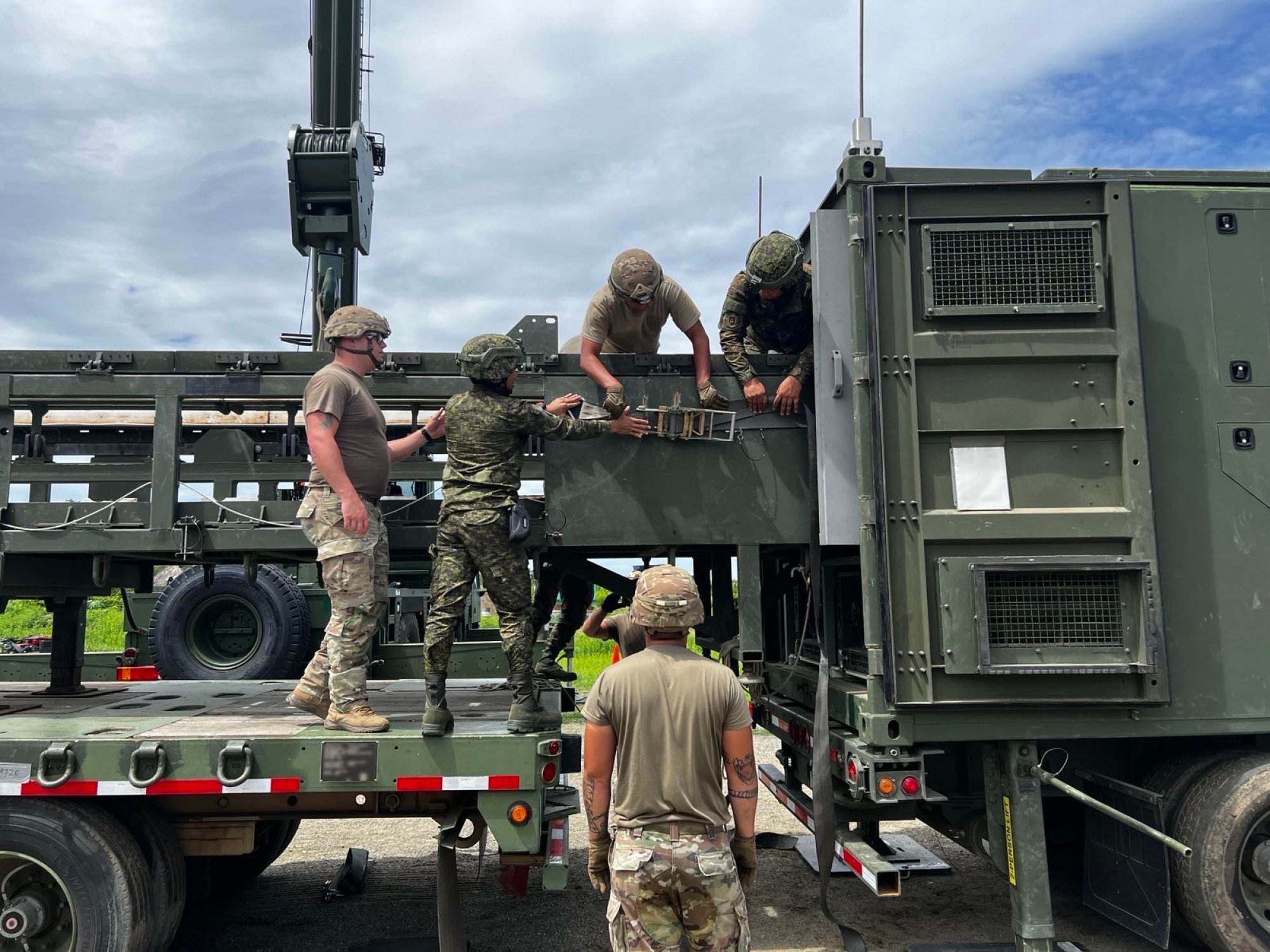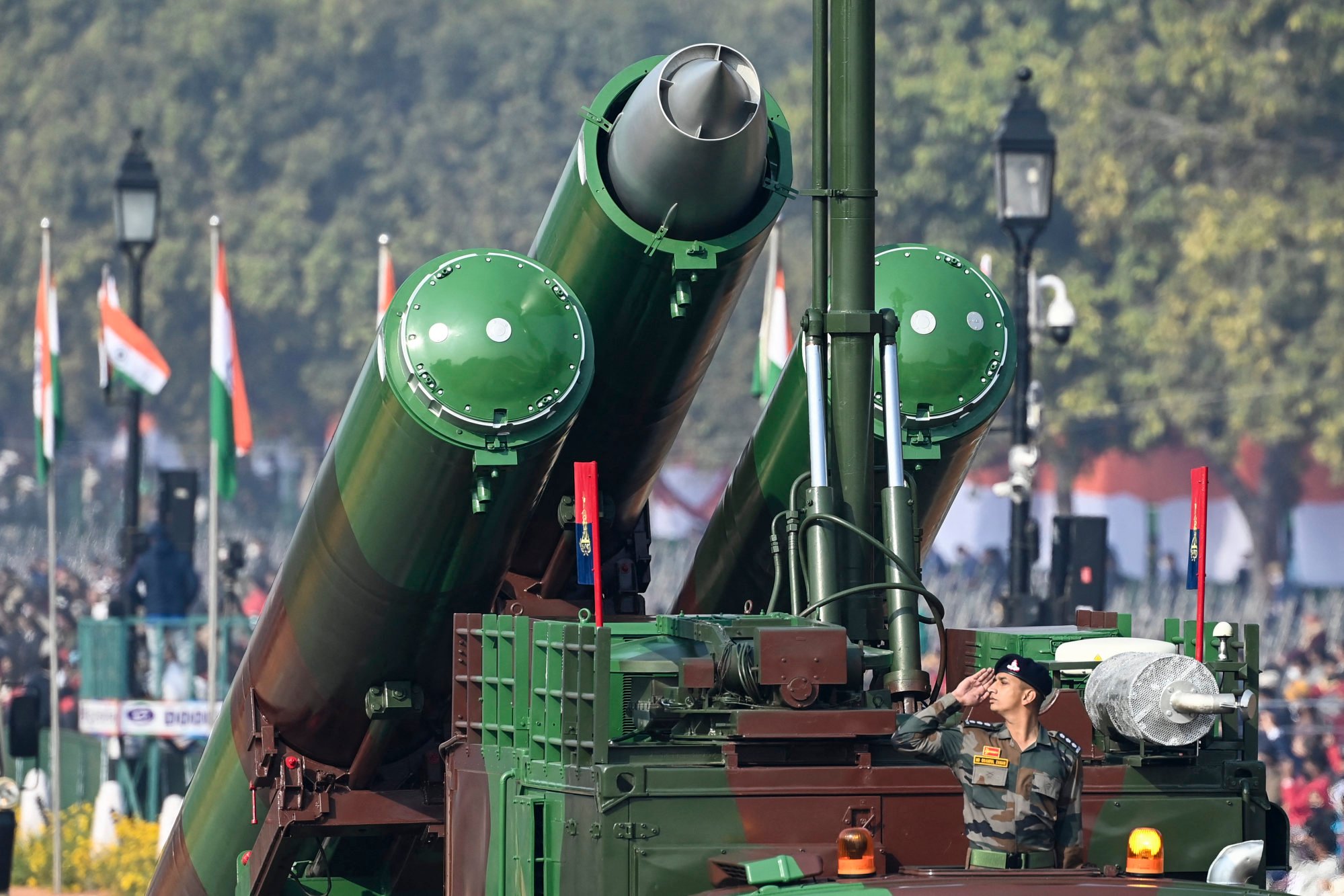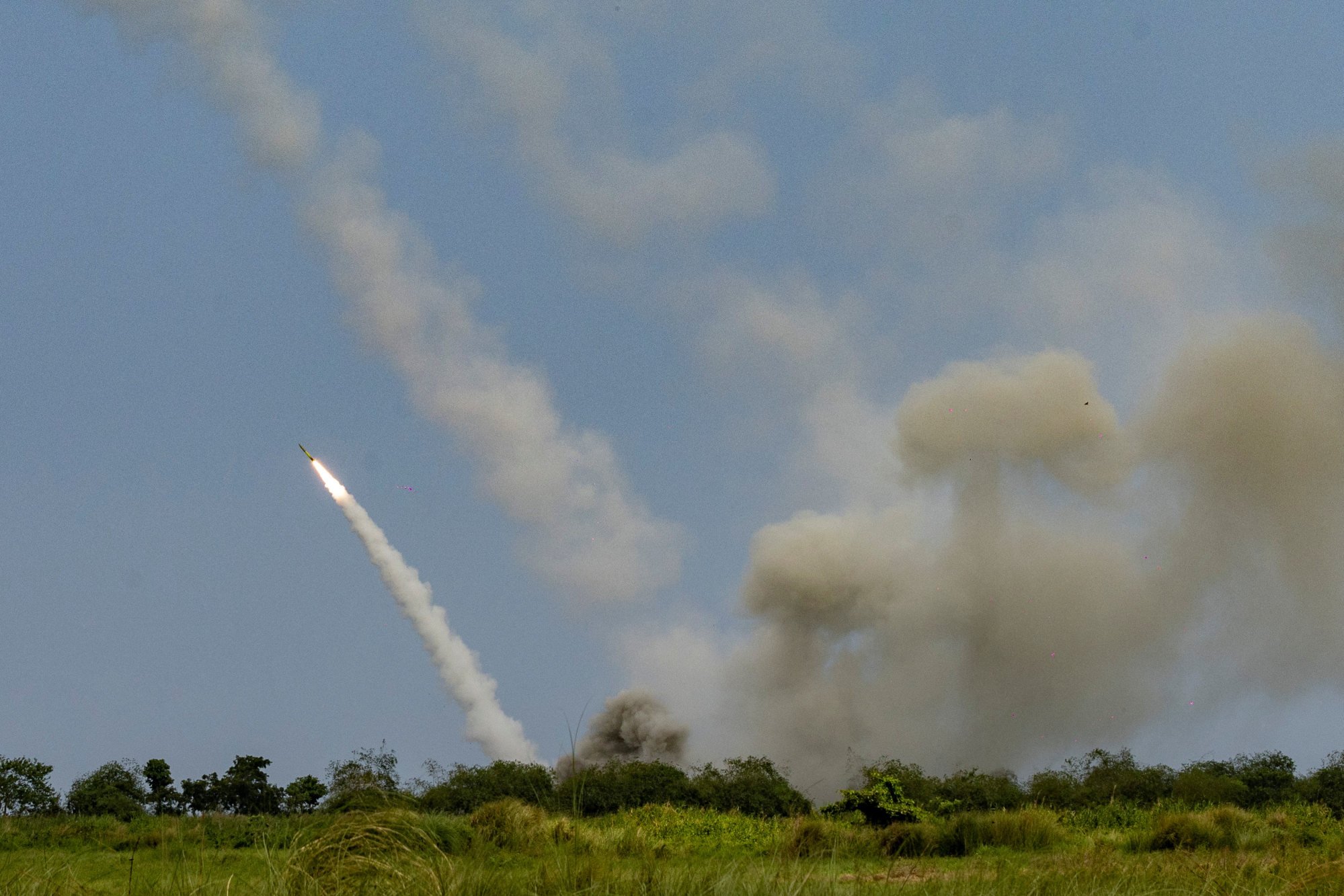As Philippines ‘bristles’ with foreign-made missiles, is it a deterrent or a danger?
Once wholly reliant on the United States for defence, Manila now has missiles of its own. Some see them as a dangerous escalation

The Philippines has entered the missile age, decades behind many of its Southeast Asian neighbours, with analysts divided over whether its growing arsenal enhances deterrence or places the archipelago at greater risk.
During the 2025 Balikatan joint military exercises with US forces, the Philippine Navy tested an array of missiles – from Korean C-star anti-ship missiles to French Mistral 3 surface-to-air missiles fired from a frigate, and Israeli non-line of sight Spike missiles launched from a fast-attack boat.
Filipino soldiers also observed American Marines setting up NMESIS missile launchers on an island in the Luzon Strait capable of dominating sea approaches to Taiwan. Manila is reportedly considering buying this system for its own use.
Just a few years ago, the Philippine military did not possess a single missile. It conducted its first-ever missile test, firing a Rafael Spike-ER as part of an acceptance trial, in 2018.
Since then, the country has steadily built a stockpile of missiles sourced from the US, Israel, South Korea and France for use against aircraft, ships and land targets. These range from man-portable systems to land-based batteries, the most notable of which is the BrahMos supersonic cruise missile from India, deployed and used by the Philippine Marines.
In 2023, following joint exercises with the US, the Philippines expressed interest in acquiring the US Army’s Himars system. A year later, during similar drills, the US deployed its Typhon missile system to Luzon. This mobile launcher, capable of firing three types of missiles, was scheduled to leave in September 2024, but Manila requested its extension and has since announced plans to buy its own Typhon system.
The build-up has made some observers uneasy. “We are bristling with US and other foreign missiles aimed at either China, Russia and North Korea, countries which have all countermeasure capabilities to destroy our island,” said Professor Roland Simbulan, chair of the Centre for People Empowerment in Governance in Quezon City. “It is a nerve-breaking situation.”
The Philippines is merely catching up with the times and with the neighbourhoodMax Montero, defence consultant
Under the US-Philippines Enhanced Defence Cooperation Agreement (EDCA), American forces are granted access to several Philippine military bases to “preposition” supplies and equipment, though missiles are not explicitly mentioned.
The deployment of US missile systems has drawn sharp criticism from Beijing. In December, China’s foreign ministry condemned Manila’s plans to acquire the Typhon as “provocative and dangerous”.
“It is an extremely irresponsible choice for the history of its own people and the people of Southeast Asia, as well as for regional security,” foreign ministry spokeswoman Mao Ning said.
For Max Montero, a Filipino-Australian defence consultant who closely tracks the Philippines’ military strength and modernisation, Beijing’s outrage was not justified.
“The Philippines is merely catching up with the times and with the neighbourhood,” he told This Week in Asia. “China has no right to be enraged since they have the most powerful military in the region, [a] hundredfold stronger than ours – and they have missiles and even nuclear weapons that they can use against us if they wanted.”

Late to the game
The Philippine military’s delayed entry into the missile era stems from decades of dependence on the US. Until 1992, the country hosted two massive American military bases, relying on US forces for external defence. Meanwhile, the Armed Forces of the Philippines (AFP) focused on counter-insurgency operations, tackling Asia’s longest-running insurgency instead of external threats.
“The AFP was focused on an internal threat, thus its weapons were for counter-insurgency,” Simbulan said. “We relied entirely on the US for external defence.”
In a rare attempt at missile development during the 1970s, former dictator-president Ferdinand Marcos Snr ordered the creation of the “Bongbong 1”, named after his son and current president, Ferdinand Marcos Jnr. The project was a failure. “It became a joke because it was really a kwitis (firework),” Simbulan said. “After one test firing, the project was called off.”
The turning point came in 2012, according to defence analyst Richard Fisher Jnr, a senior fellow on Asian military affairs of the International Assessment and Strategy Centre think tank.
Before that year, the Philippines had “lacked a credible air defence capability, modern fighters, anti-aircraft missiles, long-range air defence radar and maritime patrol aircraft”. But in 2012, what Fisher described as “China’s belligerence” in the South China Sea prompted then-president Benigno Aquino to launch a sweeping military modernisation programme.
The AFP has since narrowed the gap with regional neighbours, though it still lags behind in several areas.
“While we suddenly found ourselves in the missile age, we are still lacking in many aspects, including capacity and quantity,” Montero said.
The Philippines’ air-defence missile system is more advanced than Malaysia’s, for example. But Montero said Kuala Lumpur had superior short-range systems and fighter aircraft capable of carrying a diverse range of missiles.

For him, the most impactful purchase had been the BrahMos weapons system from India. “The BrahMos land-based anti-ship missile is a game changer,” Montero said. “Only Vietnam has an equivalent system in Asean.”
But he acknowledged that China’s missile capabilities – including hypersonic weapons with ranges of thousands of kilometres – far exceeded the Philippines’ BrahMos system, which has a 300km (186-mile) range.
Alessio Patalano, professor of war and strategy in East Asia at King’s College London, dismissed assertions that the Philippines now “bristles” with missiles.
“It is premature to suggest that,” he said. “Any upgrade of capabilities … is something of a process that requires time and investment to produce lasting effects.”
Still, “it is fair to say that this is a significant step,” Patalano said.
Deterrence or destabiliser?
Simbulan described the acquisition of so many missiles as “a destabilising factor” that could provoke China, Russia and North Korea.
“The US is deploying missiles to beef up its encirclement of China – it is destabilising no matter how you look at it because for sure Chinese counter-missiles are locked on fixed US launchers that are land-based on EDCA sites,” he said.
He argued that the Philippine military should focus on defensive systems. “The only missiles that I would want the AFP to purchase for the country are defensive missiles designed specifically against incoming threats, such as the Patriot missile and anti-ballistic missiles like [South Korea’s] THAAD, and missile defence systems. But these have to be managed and controlled by the AFP.”
Patalano said the missiles “represent part of a deterrence response to Chinese developments that have been in plain sight to see for several years”.
“They are a disadvantageous development for China, but not destabilising per se,” he said.

Montero also described the Philippines’ new missile systems as a deterrent. The goal was “to deter China, to make them think if it’s worth starting trouble in the region”, he said.
“Especially when our defence may involve the participation of our US ally and other regional partners like Japan and Australia,” Montero said.
“If the AFP is capable of sinking many Chinese ships in a theoretical conflict, this might deter China from even starting a conflict.”